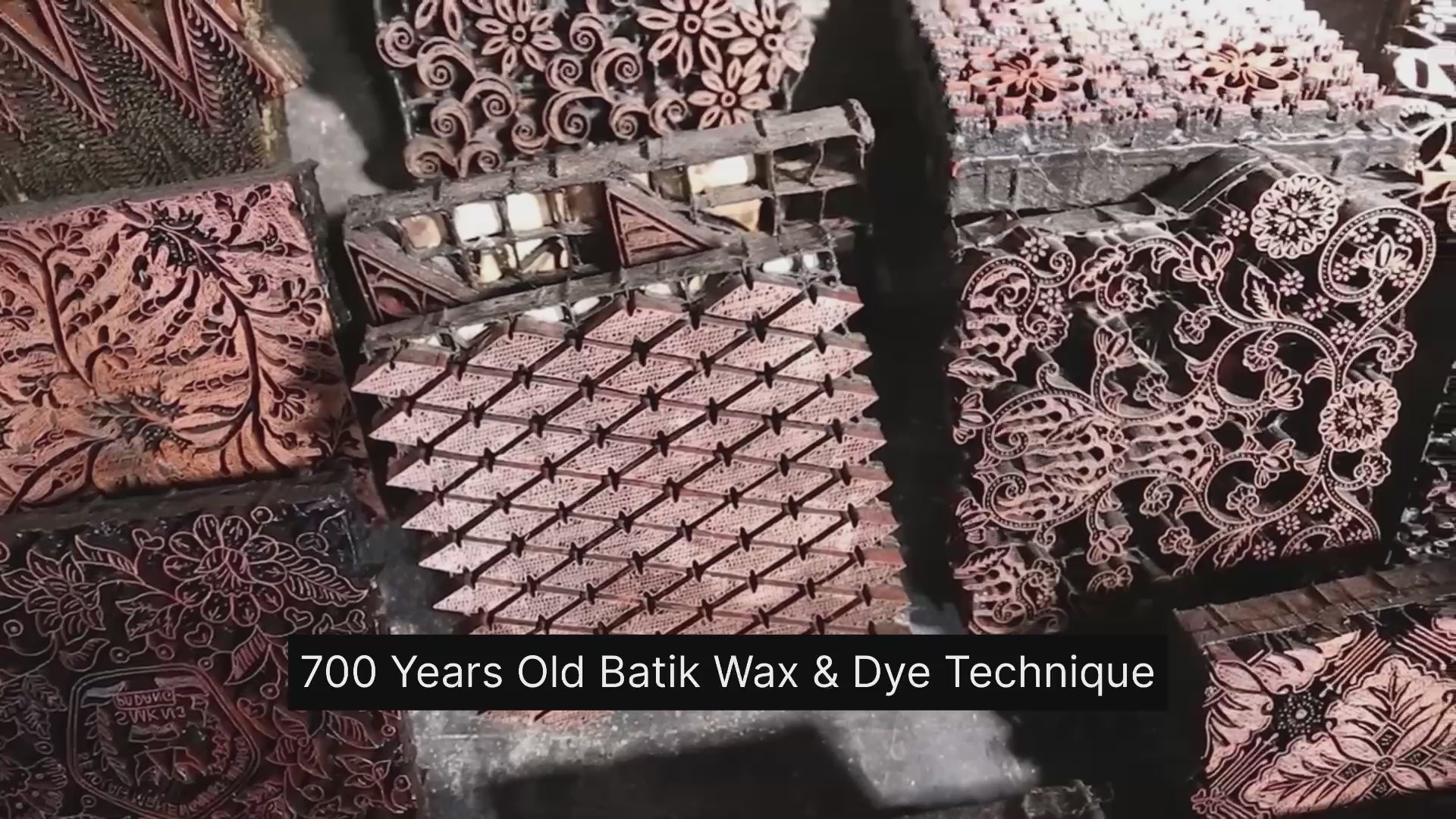Foulard Batik fait main - Coton - Plumeria
Impossible de charger la disponibilité pour le Service de retrait
Il s'agit d'une écharpe batik lavable faite à la main par des artisans.
- Ce tissu est fabriqué à la main par des artisans de Java en utilisant une technique de batik de cire et de teinture vieille de plusieurs siècles.
- Ce motif s'appelle Kembang Kamboja, ce qui signifie fleurs de plumeria.
- Taille: 71 "x 21"
- Fabriqué avec du coton
- Lavable en machine à froid et séchage à l'air libre. Lavez l’écharpe batik séparément des autres vêtements.
Châle Batik fait à la main, Wrap, Tissu en tissu Batik, Fabriqué artisanalement, Cadeau pour elle, Écharpe femme, Doux 100% Coton, Lavable en machine, Foulards, Écharpe faite à la main, Bloc à main S carf, Écharpe H et timbre, Tissu Batik en coton, Batik Indonésie, Rose Foulard Batik violet, Cadeau d’hôtesse, Idée cadeau, Batik Moderne
Kasih Co-op shares the culture and craft of Indonesia's batik
Handcrafted 700 years old batik wax & resist technique
FAQ for Batik Scarves & Bandanas
What makes this a genuine Indonesian Batik, and how can I tell it’s not a mass-produced printed design?
Authentic Indonesian Batik is defined by the traditional wax-resist dye technique, a craft recognized by UNESCO. Our products are created using either Hand-Drawn (Batik Tulis) or Hand-Stamped (Batik Cap) methods.
The easiest way to confirm authenticity is by performing the "Double-Sided Check": Genuine batik colors and patterns are almost identical and equally vibrant on both the front and the back of the fabric, because the wax and dye fully penetrate the cloth. Printed imitations will show a bright front but a noticeably faded or indistinct back.
Why is Indonesian Batik considered a unique cultural heritage?
Indonesian Batik is far more than just fabric; it is a living tradition. In 2009, UNESCO recognized Indonesian Batik as a Masterpiece of the Oral and Intangible Heritage of Humanity.
The craft is deeply intertwined with the Indonesian cultural identity, spirituality, and visual storytelling, with techniques and symbolic meanings passed down through generations. Specific Javanese motifs, for instance, were historically reserved for royalty, adding layers of meaning to every thread.
What is the meaning behind the most popular Batik motifs like Parang, Kawung, or Mega Mendung?
Batik motifs function as a visual language, carrying deep philosophical meanings :
- Parang: This diagonal, wave-like pattern, originating in Central Java’s royal courts, symbolizes strength, continuity, and resilience.
- Kawung: One of the oldest motifs, based on intersecting circles (resembling the palm fruit), it symbolizes purity, justice, and is a reminder to never forget one's origins.
- Mega Mendung: This cloud pattern from Cirebon represents patience, calmness, and the expectation for the wearer to remain controlled and cool in handling problems.
How should I wash my Batik to ensure the colors do not fade and the fabric lasts?
Proper care ensures the longevity of your handcrafted item. Gentle is key :
- Washing: We strongly recommend hand washing in cold water. If you use a machine, select the delicate/gentle cycle and place the batik in a mesh bag.
- Detergent: Use a mild detergent. Never use chlorine bleach or strong detergents.
- Drying: Air-dry in the shade. Prolonged exposure to direct sunlight must be avoided as it causes color fading. Do not wring or twist the fabric.














